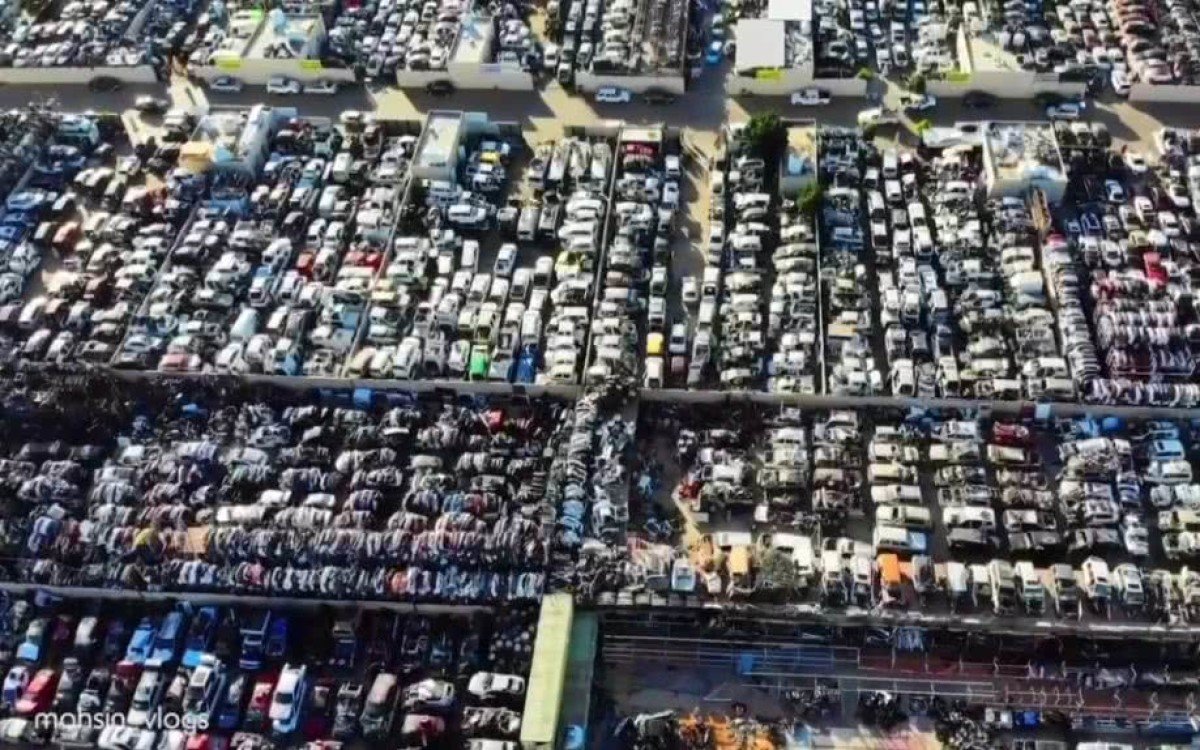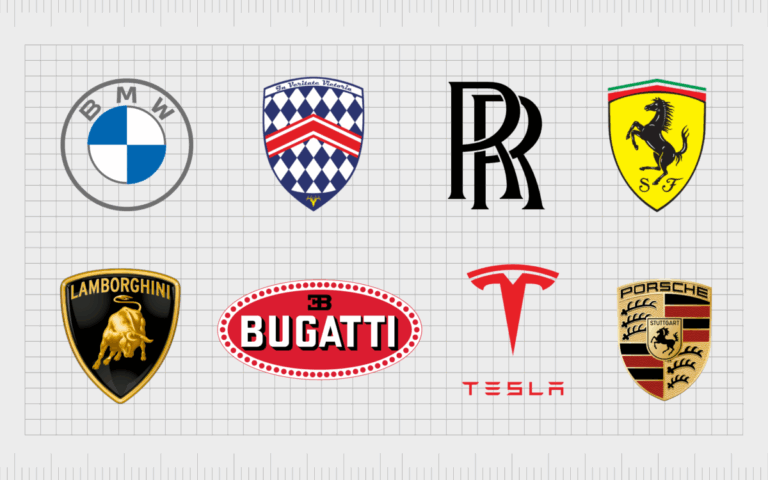Brand New Car Graveyard: Unpacking the Paradox of Unsold Automobiles
Brand New Car Graveyard: Unpacking the Paradox of Unsold Automobiles cars.truckstrend.com
In an era defined by relentless innovation and surging consumer demand, the image of a "Brand New Car Graveyard" stands as a stark and unsettling paradox. Far from being a macabre tourist attraction, this term describes the often-hidden reality of vast holding facilities, airfields, and overflow lots where thousands, sometimes hundreds of thousands, of perfectly new, undriven vehicles sit idle. These aren’t junkyards for salvaged cars; they are resting places for gleaming automobiles that, for various complex reasons, have never made it to a showroom floor, let alone a happy owner’s driveway.
The existence of these "graveyards" highlights critical inefficiencies within the global automotive industry – a complex web of manufacturing, logistics, and market dynamics that can, at times, become catastrophically imbalanced. Understanding why these sites exist, their profound implications, and what the industry is doing to address them offers a unique lens through which to view the challenges and future of global mobility. This article delves into the anatomy of these automotive anomalies, exploring their causes, consequences, and the collective efforts required to steer towards a more sustainable and less wasteful future.
Brand New Car Graveyard: Unpacking the Paradox of Unsold Automobiles
Anatomy of a Graveyard: Why Do Brand New Cars End Up Here?
The sight of thousands of new cars gathering dust, exposed to the elements, is not a simple oversight. It’s the culmination of intricate challenges across the automotive value chain. Several key factors contribute to the formation of a Brand New Car Graveyard:
- Overproduction & Miscalculation of Demand: At the heart of many graveyards lies an optimistic, or perhaps aggressive, production schedule that outstrips actual market demand. Manufacturers often forecast sales years in advance, and if these projections are overly optimistic or market conditions shift unexpectedly (e.g., an economic recession, a sudden change in consumer preference towards SUVs over sedans, or electric vehicles over internal combustion engines), factories continue to churn out vehicles that have no immediate buyers.
- Economic Downturns & Shifting Markets: Global financial crises, regional economic slowdowns, or even political instability can cause consumer confidence to plummet, leading to a sharp drop in new car sales. When purchasing power diminishes, discretionary spending on big-ticket items like cars is often the first to be cut, leaving manufacturers with unsold inventory.
- Logistical Bottlenecks & Supply Chain Glitches: Even if demand exists, getting cars from the factory to the dealership can be fraught with challenges. Port congestion, shipping container shortages, a lack of available car transporters, or even a shortage of specific components (like semiconductors, as seen during the COVID-19 pandemic) can halt the delivery process. Incomplete vehicles might be stored awaiting parts, while completed vehicles might be stuck awaiting transport, leading to massive backlogs in temporary storage.
- Natural Disasters & Environmental Damage: Unforeseen events like hurricanes, floods, hailstorms, or wildfires can cause significant damage to vehicles awaiting shipment or stored at port facilities. Even minor damage can render a new car unsellable through traditional channels, leading to its eventual relegation to a damaged-vehicle graveyard.
- Quality Control & Massive Recalls: Occasionally, a widespread manufacturing defect or a critical safety issue discovered after production can lead to a massive recall or a stop-sale order. Thousands of vehicles might be pulled from circulation, requiring extensive repairs or even complete scrapping, even if they are brand new.
- Regulatory Changes & Emissions Standards: Evolving emissions regulations or safety standards in different markets can sometimes render a batch of vehicles non-compliant before they can be sold. If retrofitting is too expensive or impractical, these cars may never see the road.

The Hidden Costs: Economic, Environmental, and Reputational Ramifications
The existence of Brand New Car Graveyards is far from benign. It represents a significant drain on resources and carries substantial, often hidden, costs across multiple dimensions:
- Economic Burden: The most immediate cost is financial. Manufacturers incur massive expenses for storing these vehicles – land leases, security, maintenance (battery charging, tire rotation to prevent flat spots, cleaning), and insurance. Every day a car sits unsold, it depreciates, losing value. This represents a significant capital drain and a loss of potential revenue. Furthermore, resources (raw materials, energy, labor) were expended to produce vehicles that are not fulfilling their intended purpose.
- Environmental Impact: The environmental footprint is substantial. Vast tracts of land are converted into temporary storage facilities, often paved, leading to habitat loss. The manufacturing process itself consumes immense amounts of energy and raw materials, and produces emissions. When these vehicles are eventually scrapped or recycled, it adds to waste streams, even if partially recovered. The entire lifecycle carbon footprint for a car that never gets driven is a profound waste of resources.
- Reputational Damage: For automotive brands, the image of thousands of unsold cars can erode public trust and brand perception. It suggests inefficiency, waste, and a disconnect from consumer needs, potentially deterring future buyers.
- Impact on Dealers & Consumers: While not directly affected by graveyards, the underlying issues can ripple through the market. Overproduction can lead to heavy discounting, impacting profit margins for dealers and potentially depressing the resale value of similar models already on the road. For consumers, it can mean fewer desirable models are available if they’re stuck in limbo, or conversely, a flood of discounted models if a manufacturer is desperate to clear inventory.


Mitigating the Accumulation: Strategies for a Leaner Automotive Future
The automotive industry is keenly aware of the problems posed by these graveyards and is actively seeking solutions to minimize their occurrence:
- Adaptive Manufacturing & Just-In-Time Production: Moving away from rigid production schedules towards more flexible, demand-driven manufacturing models. This involves producing cars closer to when they are actually sold, reducing reliance on massive stockpiles.
- Improved Demand Forecasting with AI & Big Data: Leveraging advanced analytics, artificial intelligence, and machine learning to predict market trends and consumer preferences with greater accuracy. This helps align production more closely with anticipated sales.
- Flexible & Resilient Supply Chains: Diversifying suppliers, building redundancies into logistics networks, and having contingency plans for disruptions (e.g., alternative shipping routes, buffer stocks of critical components).
- Pre-emptive Damage Control & Storage Solutions: Investing in covered or multi-story storage facilities in areas prone to extreme weather, or developing rapid deployment methods for protective covers.
- Repurposing & Recycling Initiatives: For vehicles that cannot be sold, exploring options for disassembling them for parts, recycling materials, or even repurposing chassis for non-automotive uses where feasible.
- Digital Sales & Direct-to-Consumer Models: Some manufacturers are experimenting with online-only sales or build-to-order models, which reduce the need for large dealer inventories and allow for more precise production.
- Dynamic Pricing & Inventory Management: Using sophisticated software to track inventory levels globally and adjust pricing strategies dynamically to move excess stock before it becomes a long-term problem.
Navigating the Landscape: What Consumers and Stakeholders Should Know
For those outside the immediate industry, understanding Brand New Car Graveyards offers valuable insights:
- For Consumers: While you cannot directly buy from these graveyards, the phenomenon impacts the market. Be aware of "new old stock" or heavily discounted models that might have been sitting for a while. Always check the vehicle’s manufacturing date and vehicle history report (VHR) for any disclosures of damage or long-term storage. A car that has sat for an extended period might require more immediate maintenance (e.g., new tires, fluid checks, battery replacement).
- For Manufacturers: The imperative is clear: embrace sustainability, ethical production, and responsiveness. Invest in technology that enhances forecasting and supply chain resilience. Prioritize circular economy principles to minimize waste.
- For Policymakers: Consider incentives for efficient and sustainable manufacturing practices, support for advanced recycling infrastructure, and investment in robust logistics networks to prevent bottlenecks.
The True "Price" of a Brand New Car Graveyard
It’s impossible to put a singular, literal price tag on a "Brand New Car Graveyard" as it’s a conceptual representation of waste and inefficiency rather than a product or service. However, we can quantify the various costs and implications associated with this phenomenon. The true "price" is a multi-faceted burden on the economy, environment, and brand reputation.
| Cost Category | Description | Estimated Impact/Examples |
|---|---|---|
| Direct Financial | Expenses incurred for storage, maintenance, insurance, and eventual disposal of vehicles. | Storage Fees: $50-$200+ per vehicle per month (depending on location and facilities). For 100,000 cars, this is $5-$20+ million monthly. Maintenance: Battery charging, tire rotation, cleaning, security, rust prevention. Insurance: Coverage against theft, damage. |
| Opportunity Costs | Lost revenue from unsold vehicles; capital tied up in unproductive inventory. | Lost Sales Revenue: Millions to billions of dollars in potential sales that never materialize. Capital Immobilization: Resources that could be invested in R&D, new models, or other profitable ventures are tied up in stagnant inventory. Depreciation: New cars lose value rapidly even when sitting; a car sitting for a year can lose 15-25% of its value. |
| Environmental Costs | Resource depletion, pollution from manufacturing, land degradation, waste. | Carbon Footprint: Emissions from manufacturing vehicles that are never utilized. Each car’s production can generate several tons of CO2. Resource Depletion: Waste of steel, aluminum, plastics, rare earth minerals, and water used in production. Land Usage: Conversion of natural landscapes into vast paved storage areas. Waste Management: Costs and environmental impact of eventually scrapping or recycling unutilized vehicles. |
| Reputational Costs | Damage to brand image, consumer trust, and perception of corporate responsibility. | Brand Erosion: Perceived as wasteful, inefficient, or out of touch with market demand. Loss of Consumer Confidence: Questions about product quality or market strategy. Negative Media Coverage: Public outcry over images of vast car graveyards. |
| Social Costs | Potential job losses in associated industries due to market imbalances. | Supply Chain Instability: Disruptions can lead to layoffs in parts manufacturing or logistics. Economic Volatility: Contribution to market instability when major industries face such significant waste. |
Frequently Asked Questions (FAQ)
Q: Are Brand New Car Graveyards a common phenomenon?
A: While not a daily occurrence on every corner, large-scale storage facilities for new, unsold cars are a recurring issue in the automotive industry, particularly during economic downturns, major supply chain disruptions, or after significant natural disasters. They are a symptom of global economic and logistical complexities.
Q: Can consumers buy cars directly from these graveyards?
A: No, typically not. These are private holding facilities managed by manufacturers or their logistics partners. Cars here are either awaiting transport, undergoing repairs, or are slated for eventual disposal. They are not open to the public for direct purchase. Any car sold to a consumer would go through an authorized dealership, usually after any necessary reconditioning or damage disclosure.
Q: What ultimately happens to the cars in these graveyards?
A: The fate varies:
- Eventually Sold: Many are eventually transported to dealerships and sold, sometimes at a discount, or to other markets where demand is higher.
- Repaired & Sold: If damaged (e.g., hail, flood), they might be repaired and then sold as "damaged title" or "rebuilt" vehicles, often at auction or through specialized dealers.
- Scrapped/Recycled: If the damage is too extensive, or if they’ve sat for too long and become economically unviable to sell, they are dismantled for parts or scrapped entirely, with materials recycled where possible.
- Exported: Some vehicles may be exported to developing markets where regulations or consumer preferences allow for their sale.
Q: Is this purely a modern phenomenon, or has it happened before?
A: While the scale and visibility might be more pronounced today due to globalized production and digital media, the problem of excess inventory is not new. Manufacturers have always had to manage unsold stock. However, the complexity of modern supply chains, coupled with rapid technological shifts and global economic volatility, has certainly amplified the issue.
Q: How can I, as a consumer, avoid contributing to this waste?
A: As a consumer, your direct impact is limited, as the issue stems from manufacturer overproduction. However, you can make informed choices:
- Support responsible brands: Choose manufacturers known for sustainable practices and efficient production.
- Consider used vehicles: Opting for a well-maintained used car can be a more environmentally friendly choice than always buying new, as it extends the lifecycle of existing vehicles.
- Research before buying: Understand market trends and avoid impulse purchases that might contribute to inflated demand signals.
Conclusion: A Call for Sustainable Mobility
The "Brand New Car Graveyard" serves as a powerful, albeit somber, symbol of the delicate balance between industrial ambition and market reality. It underscores the profound economic, environmental, and reputational costs associated with unchecked production and unforeseen disruptions. While the gleaming rows of unbought cars represent a significant challenge, they also serve as a catalyst for change within the automotive industry.
The path forward demands a concerted effort towards smarter manufacturing, more resilient supply chains, and a deeper understanding of dynamic consumer needs. By embracing adaptive production methods, leveraging advanced data analytics, and prioritizing circular economy principles, the industry can strive to minimize these wasteful spectacles. Ultimately, the goal is to transition towards a more sustainable and efficient model of mobility, ensuring that every vehicle produced fulfills its purpose, rather than becoming another silent occupant in a brand new car graveyard.






